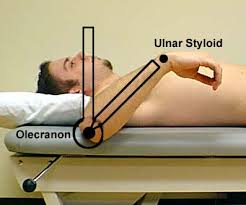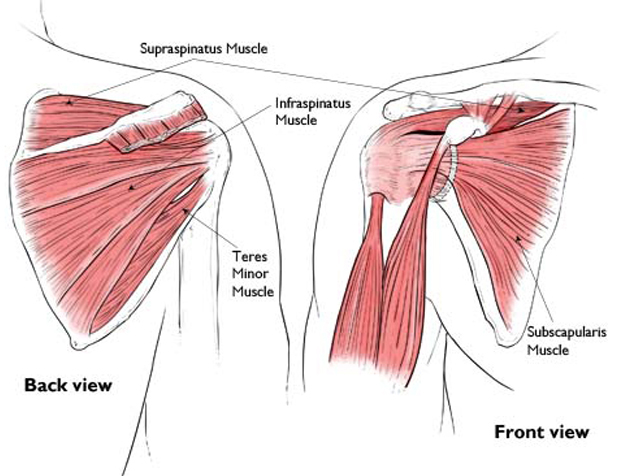Passive Range of Motion Testing and Post-isometric Relaxation of the Shoulder
SOURCE: Chiro.Org’s Shoulder Page
Passive range of motion (ROM) testing of the shoulder is accomplished with the patient supine, and the shoulder joint slightly off the table. The humerus should be abducted to 90° away from the body, so that full internal and external rotation of the humerus can be explored. From the neutral position (with the forearm pointing at the ceiling) normal ROM findings would involve a full 90° of external and internal rotation.
Passive Range of Motion Testing
Internal Rotation. Internal rotation of the shoulder is controlled by four muscles: the The starting position would be with the patient’s forearm pointing straight up at the ceiling. From this position the arm can and should be able to rotate a full 90° in either direction. The individual on the right has lost almost half of his ability to internally rotate at the humerus, due to shortening of the external rotators. The common link between all these muscles is the C5 segment. Subluxation of C5 is common in those who present with shoulder complaints. |
External Rotation. External rotation of the shoulder is conducted by The individual on the right has lost about one-third of his ability to externally rotate at the humerus, due to shortening of the internal rotators. Mild over pressure on the forearm during this test will usually elicit pain and withdrawal sign by the patient. |
that form the rotator cuff and stabilize the shoulder joint.
(c) American Academy of Orthopaedic Surgeons, 2003.





Leave A Comment